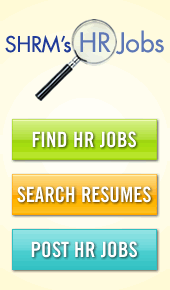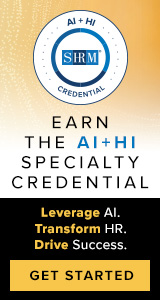Essential Elements of Employee Retention

Have you ever wondered why some of your organization’s new hires are not a good fit and leave in less than a year? If so, you’re not alone.
The Impact
According to Julie Kantnor, President and CEO of Twomentor, LLC, losing a Millennial employee can cost the company $15,000 to $25,000. It’s actually a lot more when you weigh in a few additional variables.
A study by the Society for Human Resource Management states that employers will need to spend the equivalent of six to nine months of an employee’s salary in order to find and train their replacement. That means an employee salaried at $60,000 will cost the company anywhere from $30,000 to $45,000 to hire and train a replacement.
Other research shows the average costs could be even higher. In a study conducted by the Center for America Progress, the cost of losing an employee can be anywhere from 16 percent of their salary for hourly, unsalaried employees, to 213 percent of the salary for a highly trained position.
Whew! So, what’s an organization to do?
Orientation: It’s a Start
When new employees start working at your organization, what’s that experience like? A gamut of answers may have come to mind, from “not much” to “a fairly comprehensive orientation program.”
If your answer is, “We’re probably not where we’d like to be”—don’t despair. Most of us either have been or are currently in this place. Or, some might say, “We don’t have time for a formal orientation program.” I would counter with, “You don’t have the time or the money not to have a formal orientation program.” Recall the employee turnover statistics referenced above.
Consider starting at the beginning. Orientation is what you do on your first day with your new hires. Completing W-4’s, direct deposit, and I-9 forms are “orientation-type” activities. Does your New Employee Orientation Program include more than that? It can certainly contain the elements of completing all of the required paperwork, but what else should be included? Ask yourself: What are the important things new employees need to know about your organization and its culture, and who do they need to meet before they start working? Build your orientation program around these items.
Here’s an easy one: Is your new employee’s workstation (desk, area on shop floor, etc.) welcoming, clean, well-stocked and containing all of the essentials the employee will need? For example, take steps to ensure if the employee needs a phone and a computer that those items are ready and waiting. This is certainly preferable to having your new employee hunt for these essential tools. Does your organization offer your employees any branded items such as pens, mugs or t-shirts? If so, have them available on day one for your new employees.
Introduce the policies, procedures, functions, and people that your new employees need to know up-front. Remember, we want to “set our employees up for success.” To quote the late Maya Angelou, “I’ve learned that people will forget what you said, people will forget what you did, but people will never forget how you made them feel.” This is certainly the case with your new employees.
Onboarding: Making an Investment
Another way to increase the likelihood that you will retain new employees is to create an onboarding program. New employees, particularly those who recently graduated from a technical or clinical program, may very much appreciate an opportunity to “shadow” a veteran employee or two for a period of time. Using newly-acquired skills learned in academia, and then suddenly applied on the job, is a daunting proposition for most of us. Human Resources should partner with the organization’s business leaders to create a structured, customized onboarding schedule for the new employee to shadow, learn, ask questions, and receive answers from their fellow employees before we expect them to fly solo.
Who are the people your new employee needs to meet and the systems your new employee needs to know? Tailor an onboarding program to the new hire’s position. It could last anywhere from a couple of weeks to a couple of months. This will help build an employee’s knowledge, skill level, confidence and networking contacts in their new organization.
What’s In It For Me?
Try crafting new hire orientation and onboarding programs, and compare the results against the turnover of your employees who did not receive these programs. It’s like anything else—the more time and attention you put in to it, the better your result. Ask your new employees for feedback and incorporate it into your programs. They will appreciate your efforts.
Good luck!
The HRmeister







